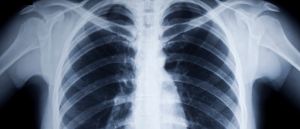
BioTechniques News
Aisha Al-Janabi

Scientists have shown that changes in the tumor matrix surrounding squamous cell carcinomas differ between patients with better and worse clinical outcomes.
Researchers at the Garvan Institute of Medical Research (Darlinghurst, Australia) have shown that the progression of squamous cell carcinoma – the second most common kind of lung cancer – could be affected by the tumor matrix surrounding it. The team, led by Thomas Cox, characterized the proteins that make up the tumor matrix and found two distinct profiles: one was predictive of a good response to chemotherapy and the other indicated treatment would be less effective. These findings could be used to develop biomarkers for determining the intensity of treatment required and improve therapeutic options.
Squamous cell carcinoma is a form of lung cancer with high levels of treatment resistance and stubbornly low survival rates. Data collected in Australia shows that 5 years after diagnosis, there is only a 20.2% survival rate of patients diagnosed with this subtype of non-small cell lung cancer.
Prior research focused on the makeup of the tumor cells but the extracellular tumor matrix surrounding it is not well understood. In this study, the scientists took tissue samples from patients with various kinds of lung cancer to examine the matrix of cells surrounding the cancerous tissues using multi-omics data including RNA-seq, whole exome sequencing and reverse-phase proteomics arrays.
 Automated lung disease diagnosis
Automated lung disease diagnosis
Artificial intelligence could reduce hospital waiting times in winter by diagnosing lung diseases from X-rays, which typically require multiple time-consuming tests.
First author Amelia Parker said, “Tumors are an ecosystem, made up of cancer cells held together by the matrix – it is this matrix that we think is supporting cancer cells to keep growing and spreading, contributing to the poor outcome for some patients. But we didn’t really have an understanding of what the matrix looks like or why it makes lung cancer resistant to treatment.”
Their results showed that squamous cell carcinomas are surrounded by an abnormal tumor matrix with these changes established early in the disease process. The team suggested that this remodeling of the tumor matrix could directly impact treatment response. They observed an increased production of collagen and higher levels of fibrosis in patients who were more resistant to treatment. This protein mix stiffens the tumor matrix and could contribute to the reduced impact of chemotherapy.
The team also found that the extracellular tumor matrix could differentiate between adenocarcinoma and squamous cell carcinoma – two different kinds of lung cancer. “These two tumors look very similar under the microscope, and are typically treated the same way, but are very different on a molecular level,” explained Cox. “This sheds light on why some patients progress well and others don’t, and how we might be able to stratify patients to provide more personalized treatment.”
These findings suggest that preventing this matrix remodeling could improve treatment responses. This could be done by repurposing existing therapies, which the researchers hope to study in a future clinical trial.
The post Could tumor matrix changes help explain lung cancer prognosis? appeared first on BioTechniques.
Full BioTechniques Article here
Powered by WPeMatico
